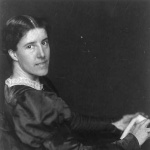Thomas Paine is a curious character, whose legacy is hard to assess. But perhaps this is why it is all the more important to (re)read him. His difficulties, ambiguities, and ambivalences, in the midst of the eighteenth-century “Age of Revolutions,” may resemble our own in what are at first sight rather less revolutionary times. But perhaps our times are every bit as revolutionary as Paine’s: he spends much of his celebrated Rights of Man reporting back from abroad; and we are also faced with upheavals elsewhere (from Syria to Venezuela, Egypt to the Ukraine) that give rise to divided opinions and uncertain allegiances.
The first part of Paine’s book is, after all, given over mostly to a stinging attack on Edmund Burke’s critical account of the French Revolution. For Paine, Burke provides more fiction than fact. Specifically, his conservative opponent concocts a kind of moral drama full of “theatrical exaggerations” and “poetical liberties [. . .] omitting some facts, distorting others, and making the whole machinery bend to produce a stage effect” (23-4). In response, then, Rights of Man provides a rather soberer description of recent history, stressing the “cool deliberation” characterizing the creation of a National Assembly (60) and its lack of “mean passions” or vindictiveness against its enemies (64). Indeed, if anything, Paine rather downplays the novelty of the revolution itself, framing it as the logical result of a prior collective prise de conscience: “The mind of the nation had changed beforehand, and the new order of things has naturally followed the new order of thoughts” (51).
Yet it is not as though Paine himself were above playing to the gallery. This book was originally a pamphlet (two, in fact) that sought–and achieved–high circulation thanks as much to its witty ripostes as to its patient explication. Paine shows himself a master of rhetorical and literary figures, from metaphor to hyperbole: Burke, for instance, is described as “mounted in the air like a balloon, to draw the eyes of the multitude from the ground they stand on” (35); his discourse is discounted as “a wild unsystematical display of paradoxical rhapsodies” (35). And yet there is something rhapsodical about Paine’s text, too, and unabashedly so. Indeed, in part two Paine relishes the popular success of the first part of his tract (“I suppose the number of copies [to have been . . .] not less than forty and fifty thousand” [100-1]) and then immediately takes the opportunity to make a pun on Burke’s charge that it should be subject to “criminal justice”: “it must be criminal justice indeed that should condemn a work as a substitute for not being able to refute it” (101). In short, the Rights of Man is infused throughout with a sort of glee–one might even say jouissance–that might be thought to undercut the emphasis it otherwise places on the triumph of reason.
It helps of course that Paine feels he is very much on the right side of history. The problem with Burke, he claims, is not so much his failure to understand what was going on in France (or America) as his insight into the implications for England: “He writes in a rage against the National Assembly, but what is he enraged about? [. . .] Alas! It is not the Nation of France that Mr Burke means, but the COURT; and every Court in Europe, dreading the same fate, is in mourning” (88). Paine, meanwhile, takes the same revolutionary events to indicate that “spring is begun” (196), that we are promised “a new era to the human race” (106), and goes so far as to venture that he does “not believe that monarchy and aristocracy will continue seven years longer in any of the enlightened countries in Europe” (102). “The present generation,” he tells us, “will appear to the future as the Adam of a new world” (191). Sadly, perhaps, Paine’s enthusiasm is not exactly borne out by events. He himself would go on to be arrested (and very nearly executed) by the French. And one wonders what he would make of his glowing account of American Exceptionalism now.
But what kind of revolutionary was Paine? Given that he seems to think that the main burden of government (corrupt or otherwise) comes in the form of taxation, he could easily be read as a forerunner of the Tea Party or other right-wing libertarians. At the same time, he also seems to believe in a kind of basic sociability or commonality promoted by everyday interaction and habit (as well as trade). And yet he spends much of part two of his book coming up with a rather detailed plan of how to redistribute surplus tax revenue (once the monarchy and privileges of landholders have been abolished) that sounds much like the foundation of what could almost be a welfare state: in place of large monopolies of land, pensions and child benefit. In short, one might even believe that Paine was not only as rhapsodical but in some ways as paradoxical as Burke, as he see-sawed between calls for less government on the one hand, and on the other comprehensive proposals that would bring on more government. The new era that he proclaimed combines both the right to revolt, the refusal to be weighed down by tradition, and also the beginnings of biopolitics, the ever more insidious advance of power relations within the population.










